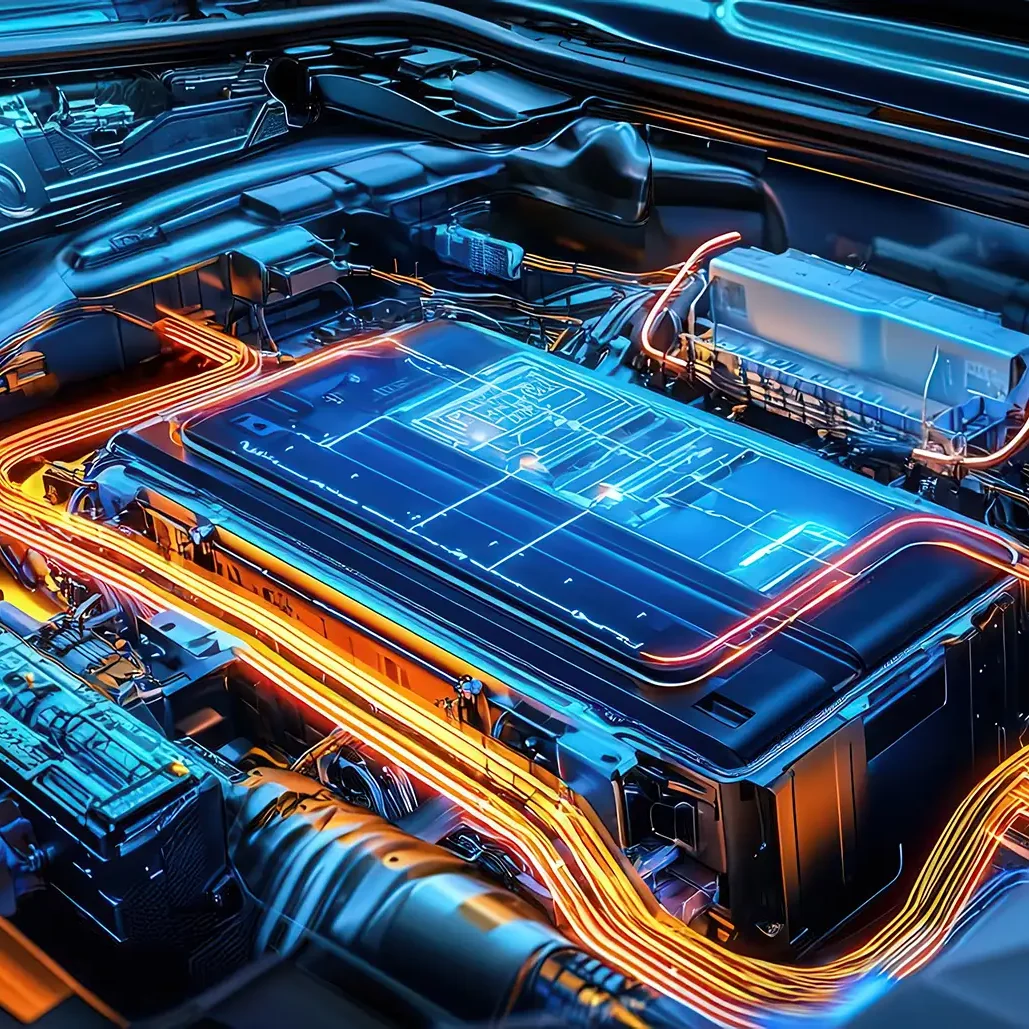Galvorn carbon nanotube wire is engineered to meet the rigorous demands of the next generation of automotive technology. From electric vehicles and autonomous systems to traditional internal combustion engines, Galvorn offers a transformative leap in material science, delivering unprecedented performance and reliability–at scale, sustainably. .
KEY FEATURES & BENEFITS

Extreme Lightweighting
-
Significantly reduce overall vehicle weight in electric and internal combustion systems.
-
Increased fuel efficiency and extended range for electric vehicles.
-
Boost payload capacity and operational efficiency in commercial transport.
Galvorn offers significant lightweighting advantages due to its low density of 1.6 g/cm³. This is 80% less dense than copper (9.0 g/cm³) and about half the density of aluminum (2.7 g/cm³). For instance, using Galvorn wire instead of 28 AWG copper signal wire can achieve a weight reduction of approximately 70 grams per 100 meters. Considering that wiring can constitute a significant portion of vehicle weight, these weight savings accumulate significantly, leading to improved fuel efficiency, extended range, and increased payload capacities for various automotive systems.
.
Unmatched Strength & Durability
-
Exceptional durability and resilience in demanding environments.
-
Enhanced structural integrity for critical components.
Galvorn wire significantly enhances the durability and resilience of wiring systems, being 50 times stronger than copper, 30 times stronger than aluminum, and 15-30x times stronger than automotive steel on a per mass basis. Automotive wiring must withstand extreme mechanical stress and harsh environments. Galvorn’s superior strength ensures long-term reliability by resisting wear and tear from constant vibration, flexing, and other mechanical forces, which is critical for maintaining signal integrity and power delivery in mission-critical vehicle systems.


Superior Flexibility
-
Easy installation in tight spaces.
-
Ideal for moving parts and applications requiring constant bending.
-
Damage-resistant even when tied into a tight knot.
Galvorn offers an astounding 1000 times the flex life of copper, behaving much like a textile. This characteristic makes it ideal for applications requiring constant bending and flexing, such as within robotic arms on assembly lines or complex wiring harnesses in modern vehicles. Its superior bend radius allows for installation in extremely tight spaces, with Galvorn fibers even capable of being tied into a tight knot without damage.
Excellent Thermal Dissipation
-
Efficient heat management for high-performance electronics.
-
Increased current carrying capacity per mass.
With a thermal conductivity of 450 W/m-K, Galvorn surpasses copper (385 W/m-K) in its ability to dissipate heat. This property is crucial for high-performance electronics and power cables, enabling higher current carrying capacity on a per mass basis. For a given weight of wire, Galvorn can safely carry more electrical current than copper because it's both lighter and better at dissipating the heat generated by that current. This is a significant advantage for high-performance electronics and power cables in applications like electric vehicles and advanced driver-assistance systems (ADAS), where every gram of weight saved directly impacts efficiency and performance.
Its textile-like form factor can also be leveraged to increase surface area, potentially leading to even better heat transfer in specific applications. Learn more about Galvorn’s development for heat exchangers.


Exceptional Corrosion & Oxidation Resistance
-
Inherently stable; does not corrode or oxidize.
-
Durable in harsh environments.
-
Flame-resistant and does not melt.
Galvorn offers exceptional durability, unlike copper, due to its inherent stability. Its carbon-carbon bonds provide resistance to oxidation and chemical reactions under standard conditions, preventing corrosion, rusting, or pitting even after prolonged use in harsh environments. As an advanced carbon material, Galvorn is also extremely flame-resistant and does not melt.
Reimagine Your Automotive Systems
Galvorn's unique combination of properties enables fundamental redesigns of aerospace wiring systems, offering:
- Simultaneous improvements across multiple critical dimensions
- Overcoming "design paradoxes" previously constrained by material limitations
- New possibilities for wire routing, integration, and miniaturization
- Empowering innovation at a system level for enhanced flight time, payload, data processing, and operational longevity
Contact us to discuss your needs.


